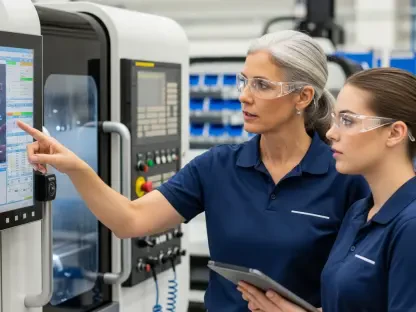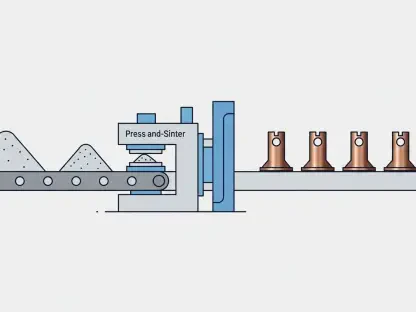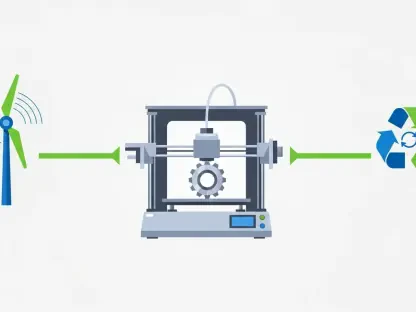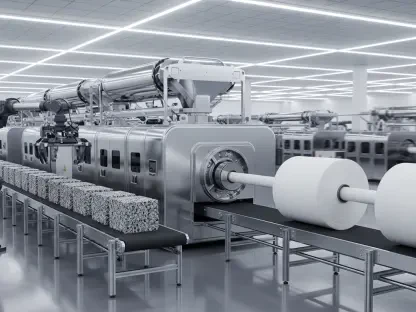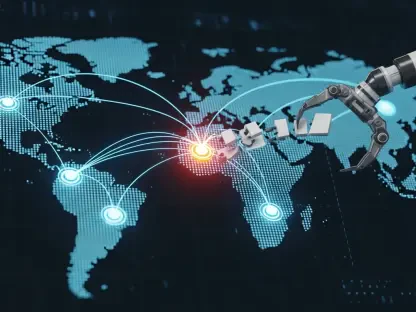Allow me to introduce Kwame Zaire, a renowned manufacturing expert with a deep-rooted passion for electronics and equipment. With extensive experience in production management, Kwame has established himself as a thought leader in predictive maintenance, quality, and safety. Today, we dive into a conversation about JPMorganChase’s ambitious Security and Resiliency Initiative, exploring how this $1.5 trillion, 10-year plan aims to strengthen national economic security through strategic investments in critical industries. Our discussion touches on the motivations behind this initiative, the focus on innovative sectors like advanced manufacturing and frontier technologies, the importance of supply chain resilience, and the broader implications for national security and global competitiveness.
How did the idea for JPMorganChase’s Security and Resiliency Initiative come about, and what’s the driving force behind this massive $1.5 trillion commitment over the next decade?
The Security and Resiliency Initiative by JPMorganChase was born out of a recognition that national economic security is deeply tied to the strength of critical industries. I believe the driving force is a response to growing vulnerabilities in global supply chains and infrastructure, especially in a world where geopolitical tensions and economic disruptions are becoming more frequent. This $1.5 trillion, 10-year plan reflects a strategic pivot to fortify the U.S. economy by investing in areas that have been historically underfunded or overly reliant on foreign partners. It’s about creating a self-sustaining ecosystem where innovation and resilience go hand in hand, ensuring that the nation isn’t caught off guard by future crises.
Why do you think the timing of this initiative is so critical for the U.S. in terms of infrastructure and supply chain modernization?
Timing is everything right now. The U.S. has been playing catch-up in areas like infrastructure and supply chain robustness compared to some global competitors. Over the past few decades, we’ve seen how over-dependence on foreign manufacturing and resources can create choke points during disruptions—think pandemics or trade disputes. Modernizing infrastructure and securing supply chains isn’t just about economic growth; it’s a matter of national security. This initiative comes at a pivotal moment when policies are aligning to prioritize domestic capabilities, and the urgency to act before these vulnerabilities widen is palpable.
With $10 billion earmarked for direct equity and venture capital investments, how will the focus on certain companies help drive innovation in strategic manufacturing?
That $10 billion is a game-changer because it’s not just about throwing money at companies; it’s about strategically selecting those that can push the needle in innovation and growth. The focus will likely be on firms that show promise in scaling up cutting-edge technologies or solving critical bottlenecks in manufacturing. By backing these companies, the initiative can catalyze advancements in areas like robotics or critical minerals processing, which are essential for reducing dependency on external sources. It’s about creating a ripple effect—supporting one company can uplift an entire sector through innovation and job creation.
Let’s zoom in on the four key areas of focus. Starting with Supply Chain and Advanced Manufacturing, why are elements like critical minerals and robotics so vital to this effort?
Critical minerals and robotics stand out because they’re foundational to almost every modern industry. Minerals like rare earths are essential for everything from electronics to renewable energy systems, yet the U.S. has been heavily reliant on foreign supply. Robotics, on the other hand, represents the future of manufacturing efficiency and precision. Prioritizing these areas ensures we’re not only securing the raw materials needed for production but also revolutionizing how we produce. It’s a dual approach to build resilience by addressing both resource scarcity and operational innovation.
Shifting to Energy Independence and Resilience, what are some of the biggest hurdles you see in advancing technologies like battery storage or grid resilience?
Energy independence is a tough nut to crack because the challenges are both technological and systemic. Battery storage, for instance, requires breakthroughs in capacity and cost-effectiveness to truly support renewable energy at scale. Grid resilience faces issues like aging infrastructure and vulnerability to cyberattacks or natural disasters. The hurdles aren’t just about funding new tech; they’re about integrating these solutions into existing systems without disruption and ensuring they’re secure. It’s a complex puzzle, but solving it is crucial for a stable, self-reliant energy future.
When it comes to Frontier and Strategic Technologies like AI and quantum computing, how can such high-risk, high-reward fields be balanced in terms of investment?
Investing in frontier technologies like AI and quantum computing is inherently risky because the outcomes are uncertain and the timelines for practical application can be long. The balance comes from a diversified approach—spreading investments across different stages of development and pairing high-risk bets with more stable, incremental innovations. It’s also about fostering partnerships between private companies and research institutions to share the burden of risk. The reward, though, could be transformative, positioning the U.S. as a leader in technologies that will define the next century.
The initiative breaks down these focus areas into 27 specific sub-areas, like shipbuilding and nanomaterials. Why is this level of granularity important?
Getting down to 27 sub-areas is a smart move because broad categories can often miss the unique challenges and opportunities within niche sectors. Shipbuilding, for example, isn’t just about building boats—it’s about securing maritime supply routes and military capabilities. Nanomaterials have specific applications in everything from medical devices to defense tech. This granularity ensures that no critical component is overlooked and allows for tailored strategies that address the distinct needs of each sub-area, ultimately strengthening the broader national security framework.
Lastly, what’s your forecast for the impact of this initiative on the U.S. economy over the next decade?
I’m cautiously optimistic about the impact of this initiative. If executed well, it could significantly bolster the U.S. economy by reducing reliance on foreign supply chains, creating high-value jobs, and positioning the country as a leader in critical technologies. Over the next decade, we might see a renaissance in domestic manufacturing and energy sectors, alongside a stronger defense and tech landscape. However, the success hinges on sustained commitment, smart allocation of resources, and adaptability to emerging challenges. If these pieces fall into place, the economic security of the U.S. could be transformed for generations to come.


